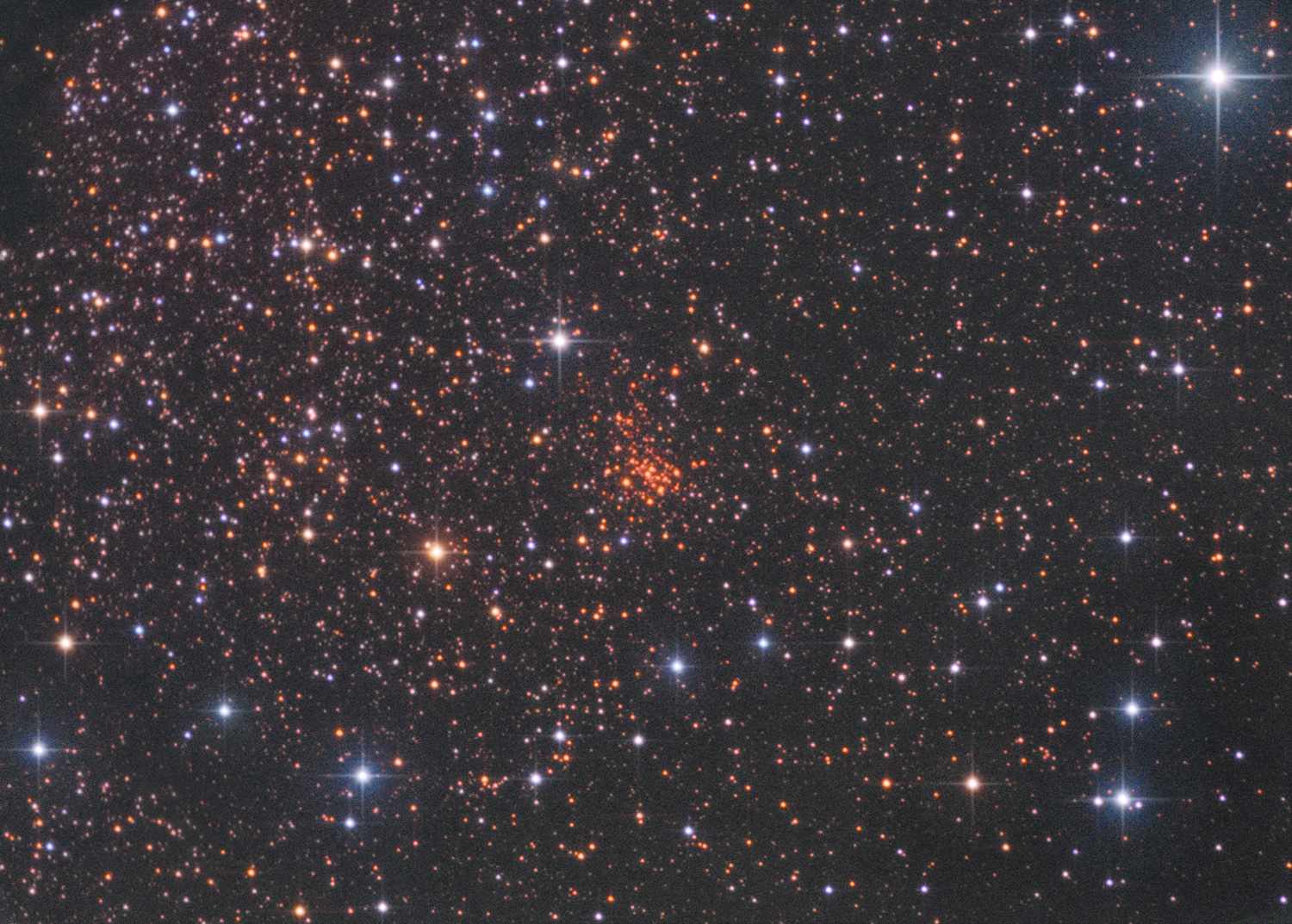
| HOME |
WESTERLUND 1
Super Cluster in ARA
(Image centered at: ra 16h:47 m / dec - 45º 51')

September 2021, Home Backyard in Martínez, Buenos Aires, Argentina
DATA
TYPE: Super Cluster
APPARENT SIZE: 4 arc minutes
DISTANCE: 15,000 light years
IMAGE INFORMATION1
SCOPE: 8" ORION OPTICS UK (Ultra Grade Optics) w/Televue Paracorr working at at f5,75
CAMERA: QSI 583 WS
MOUNT: SKY WATCHER NEQ6
FILTERS: Baader LRGB Set
SKY CONDITIONS: urban skies
EXPOSURES: LRGB (40,40,40,40)
OBJECT DESCRIPTION AND IMAGE SESSION
Discovered in 1961 by Swedish astronomer Bengt Westerlund. The true nature of the cluster was revealed in 2001. Because it is behind a dense cloud of gas and dust, the cluster appears with a reddish cast. Star cluster Westerlund 1 is home to some of the largest and most massive stars known. It is headlined by the star Westerlund 1-26, a red supergiant star so big that if placed in the center of our Solar System, it would extend out past the orbit of Jupiter.
Additionally, the young star cluster is home to 3 other red supergiants, 6 yellow hypergiant stars, 24 Wolf-Rayet stars, and several even-more unusual stars that continue to be studied. Westerlund 1 is relatively close-by for a star cluster at a distance of 15,000 light years, giving astronomers a good laboratory to study the development of massive stars. Although presently classified as a "super" open cluster, Westerlund 1 may evolve into a low mass globular cluster over the next billion years.
(*) Text adapted from NASA
WESTERLUND 1-26 -RED HYPER GIANT STAR
200% Resolution
OBJECT DESCRIPTION
Westerlund 1-26 (also known as Westerlund 1
BKS A or Westerlund 1 BKS AS, sometimes abbreviated as W26 and W1-26) is a red
hypergiant star found within the Westerlund 1 star cluster. It is one of the
biggest stars known. It has approximately 2544 solar radius
Since its discovery, Westerlund 1-26 has been known as a powerful source of
radio waves. Its physical properties are not well understood, due to the
interstellar distance between Earth and the cluster. Its strong radio emission
leads to different estimates of its size.
Westerlund 1-26 is classified as a luminous hypergiant, occupying the upper
right corner of the Hertzsprung-Russell diagram. With a surface temperature of
approximately 3000 K, it is a relatively young hypergiant, emitting mainly
infrared energy from the spectrum. It also shows a huge mass loss of
considerable material, suggesting that it may evolve into a Wolf-Rayet star.